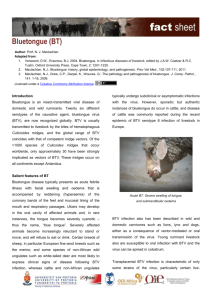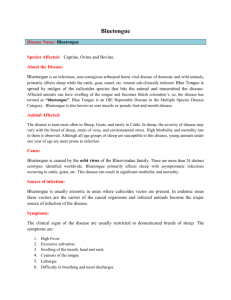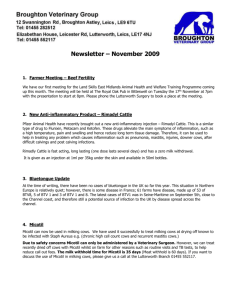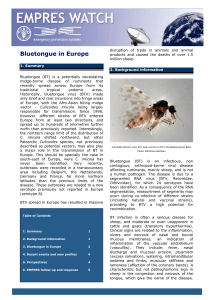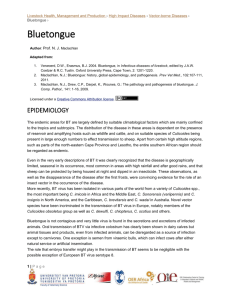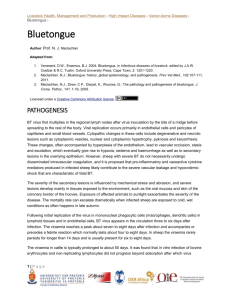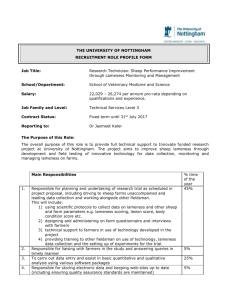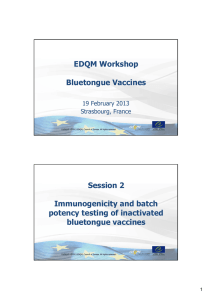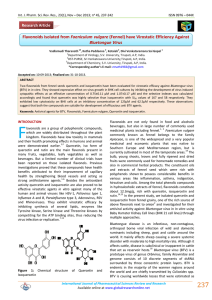Be vigilant for early signs
advertisement
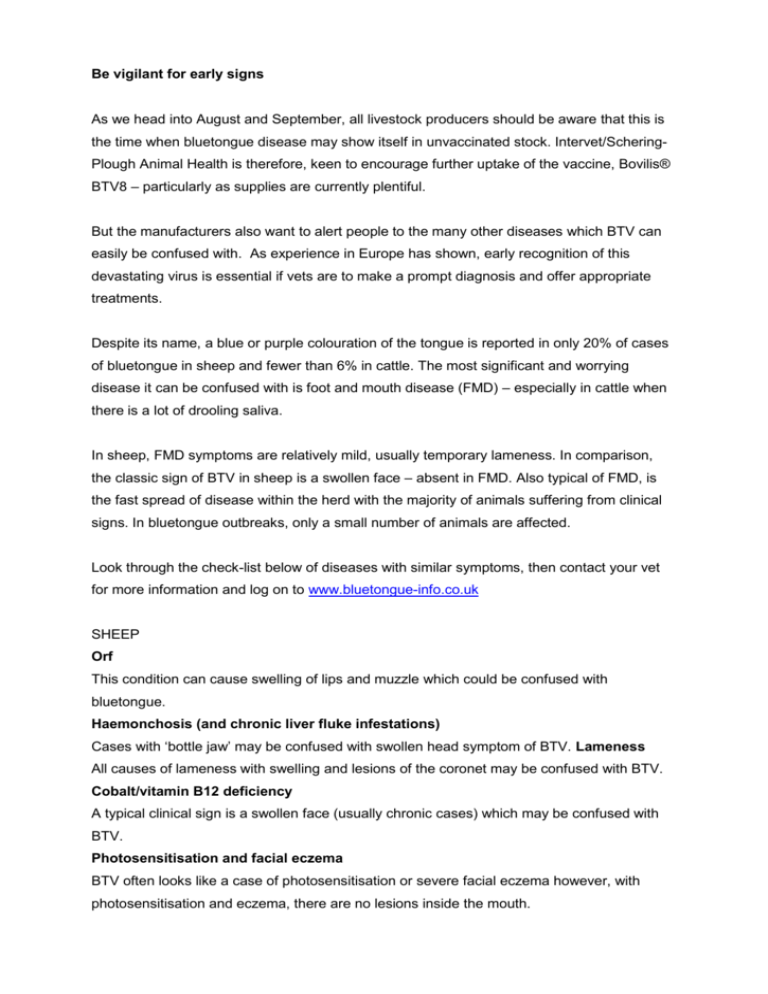
Be vigilant for early signs As we head into August and September, all livestock producers should be aware that this is the time when bluetongue disease may show itself in unvaccinated stock. Intervet/ScheringPlough Animal Health is therefore, keen to encourage further uptake of the vaccine, Bovilis® BTV8 – particularly as supplies are currently plentiful. But the manufacturers also want to alert people to the many other diseases which BTV can easily be confused with. As experience in Europe has shown, early recognition of this devastating virus is essential if vets are to make a prompt diagnosis and offer appropriate treatments. Despite its name, a blue or purple colouration of the tongue is reported in only 20% of cases of bluetongue in sheep and fewer than 6% in cattle. The most significant and worrying disease it can be confused with is foot and mouth disease (FMD) – especially in cattle when there is a lot of drooling saliva. In sheep, FMD symptoms are relatively mild, usually temporary lameness. In comparison, the classic sign of BTV in sheep is a swollen face – absent in FMD. Also typical of FMD, is the fast spread of disease within the herd with the majority of animals suffering from clinical signs. In bluetongue outbreaks, only a small number of animals are affected. Look through the check-list below of diseases with similar symptoms, then contact your vet for more information and log on to www.bluetongue-info.co.uk SHEEP Orf This condition can cause swelling of lips and muzzle which could be confused with bluetongue. Haemonchosis (and chronic liver fluke infestations) Cases with ‘bottle jaw’ may be confused with swollen head symptom of BTV. Lameness All causes of lameness with swelling and lesions of the coronet may be confused with BTV. Cobalt/vitamin B12 deficiency A typical clinical sign is a swollen face (usually chronic cases) which may be confused with BTV. Photosensitisation and facial eczema BTV often looks like a case of photosensitisation or severe facial eczema however, with photosensitisation and eczema, there are no lesions inside the mouth. CATTLE IBR This is primarily a respiratory disease without the lameness or teat lesions often seen in cases of BTV. Mucosal disease The most common clinical sign of mucosal disease is diarrhoea, but this is not present in BTV cases. Photosensitisation As for sheep above.
